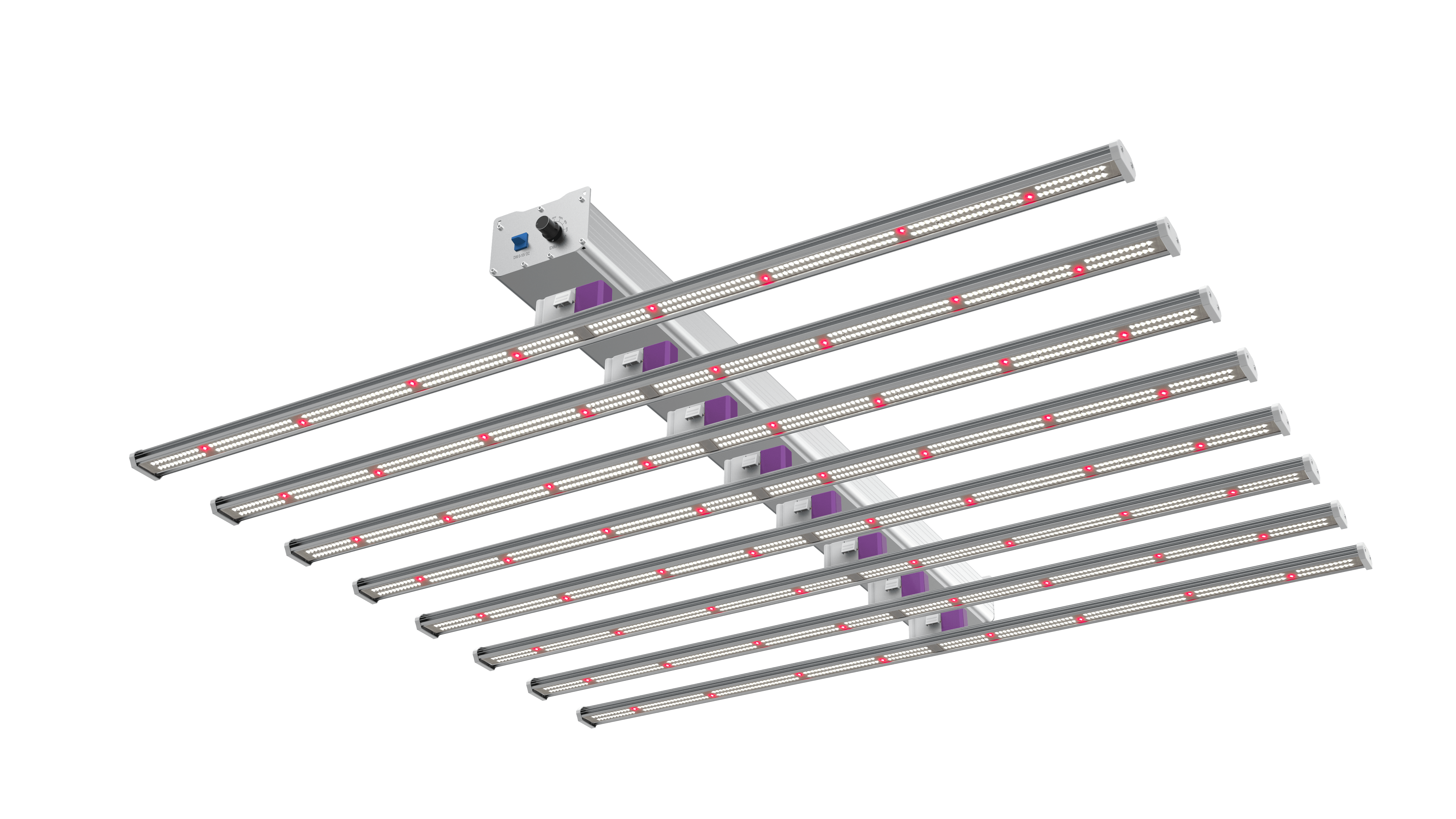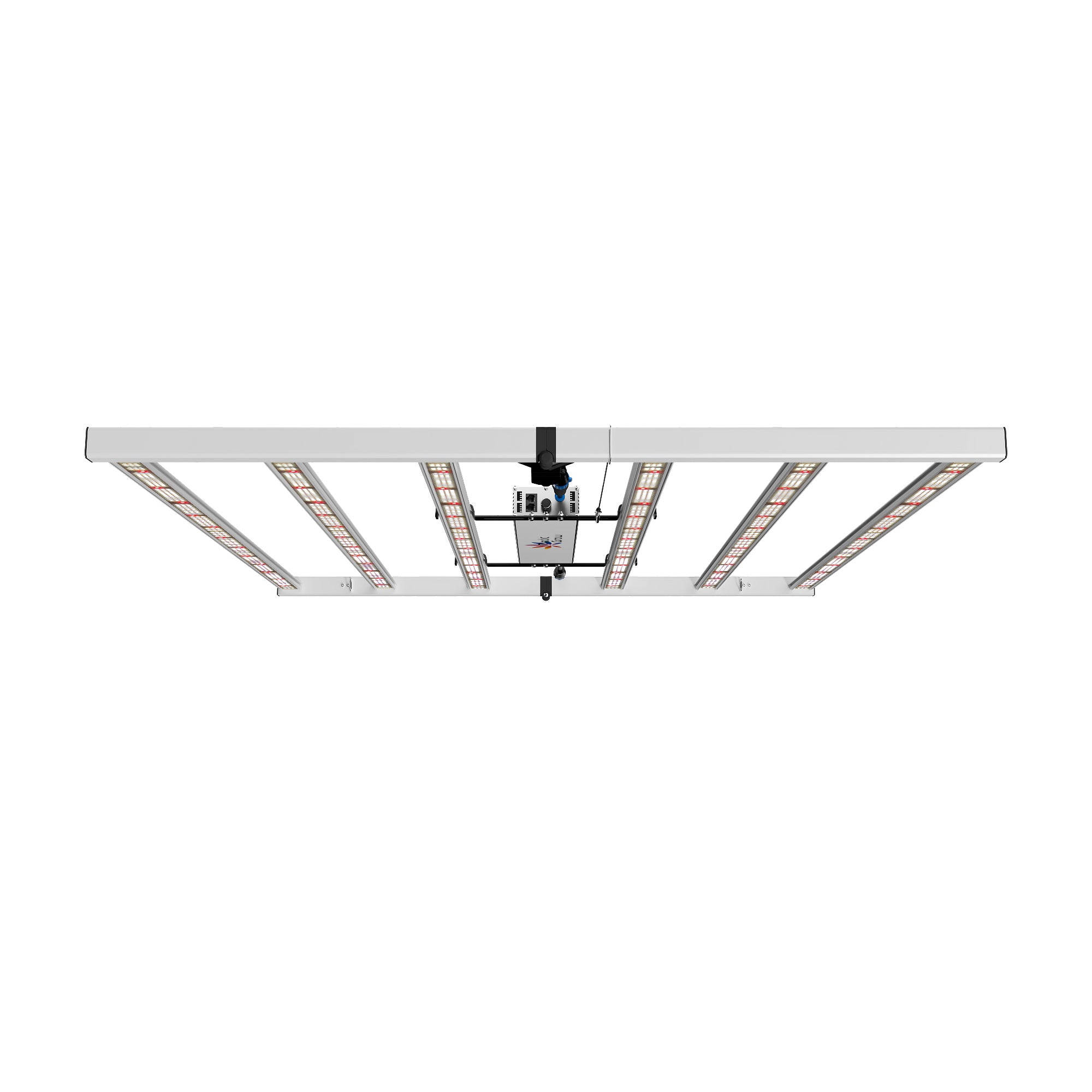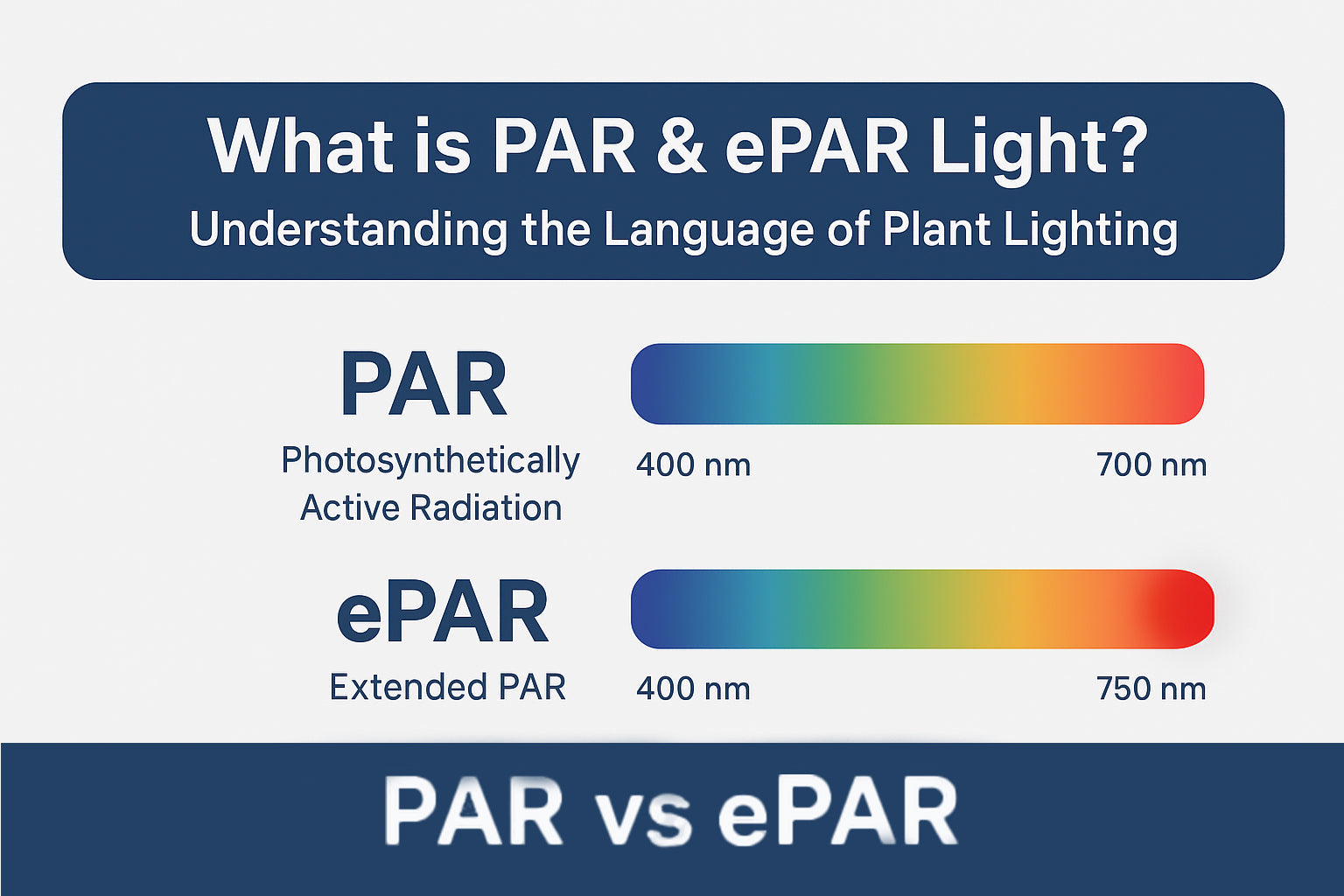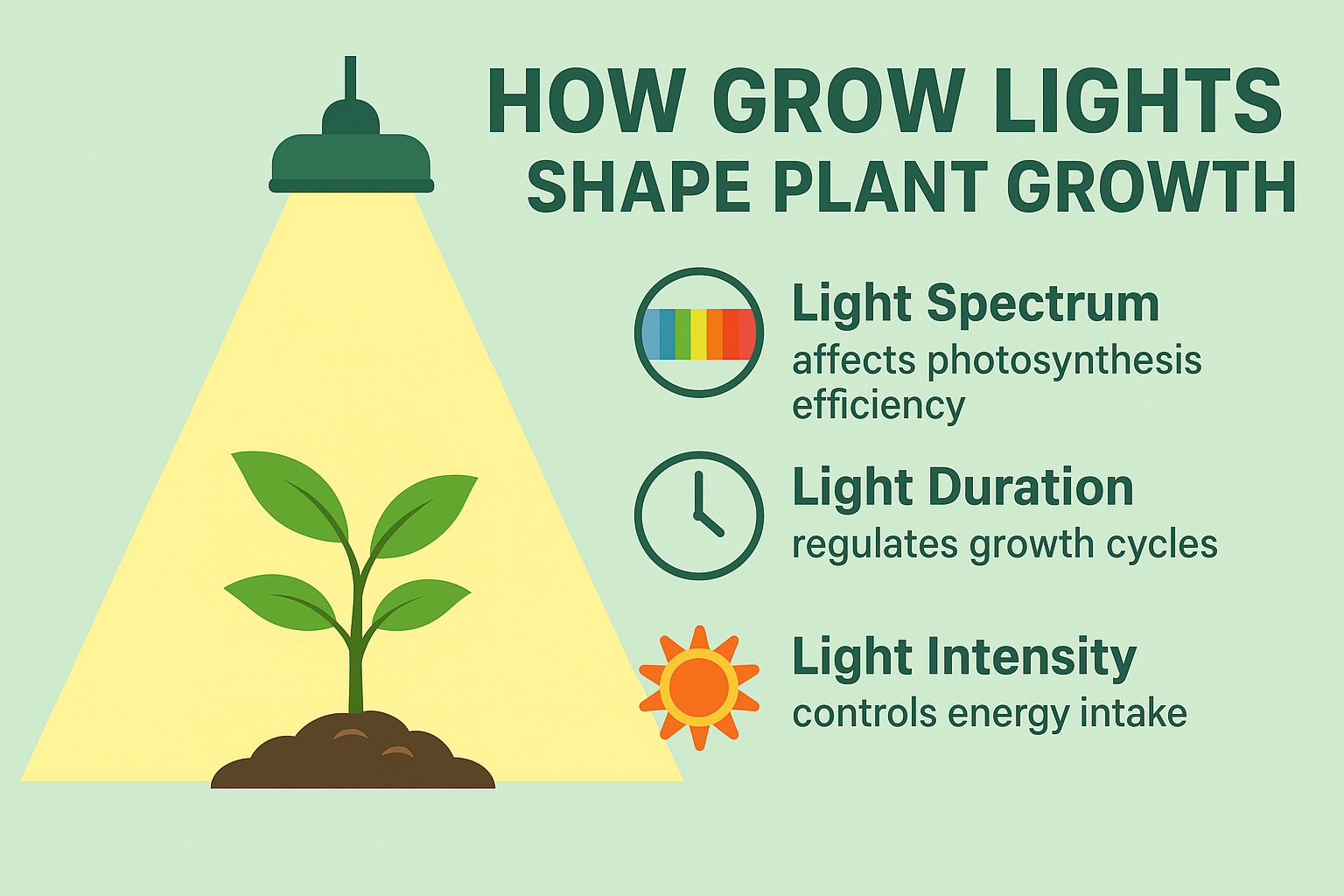
Do Grow Lights Work? How to Use Them for the Best Results
If you're an indoor grower, you may have heard about grow light - It offers a solution for year-round plant growth even in spaces with limited natural sunlight.
But do they really work, which type are the best grow lights and how can you use them to achieve the best results? In this guide, we'll explore the science behind grow lights, how they benefit different types of plants, and provide practical tips on using them effectively. I hope you can achieve better results by reading our guide.
Main Content:
- 1. Do Grow Lights Work
- 2. How Do Grow Lights Work
- 3. Types of Grow Lights
- 4. What Type of Grow Light is Best
- 5. How to Use Grow Lights for the Best Results
- 6. Conclusion
- 7. FAQs Related to Do Grow Lights Work
Do Grow Lights Work
Yes, grow lights are highly effective for indoor gardening and plant cultivation. These lights are specifically designed to replicate the natural light spectrum that plants require for photosynthesis and optimal growth.
By providing the right intensity and wavelength of light, grow lights enable you to cultivate a wide variety of plants indoors, even in spaces without access to sunlight or during unfavorable outdoor conditions.
Different types of grow lights, such as LED, fluorescent, and HID, offer various advantages depending on your specific gardening needs, such as energy efficiency, spectrum control, and cost-effectiveness.
Whether you're growing leafy greens, flowers, or larger crops, choosing the right grow light can significantly boost plant health and yield.
How Do Grow Lights Work
Grow lights work by emitting specific wavelengths of light that plants need to carry out photosynthesis—the process by which plants convert light energy into chemical energy to fuel their growth.
Natural sunlight contains a broad spectrum of light, including blue and red wavelengths, which are crucial for different stages of a plant's life cycle.
Grow lights are designed to replicate this light spectrum and can even be tailored to emphasize certain wavelengths depending on the plant’s growth phase.
- Blue light (400-500 nm): Promotes vegetative growth, helping plants develop strong stems and lush leaves.
- Red light (600-700 nm): Stimulates flowering and fruit production, making it critical during the bloom and fruiting phases of plant development.
Some grow lights like Medic Grow NEO-780 allow users to adjust the light spectrum to optimize plant growth at different stages.
For example, you might use more blue light during the vegetative stage and increase red light during the flowering phase.
Additionally, you can adjust the intensity, duration, and distance of the light source to suit the different growth stages of plants and the specific light requirements of various plant types.
In short, grow lights enable plants to thrive indoors by providing the necessary light energy and spectrum. By adjusting the light intensity, exposure time, and other settings, you can optimize plant growth for better results.
Types of Grow Lights
LED Grow Lights
LED grow lights are energy-efficient, long-lasting, and provide a full spectrum of light, making them versatile for both vegetative growth and flowering. Many models like SMART-8 PLUS also allow spectrum adjustment, making them suitable for all stages of plant growth.
Fluorescent Grow Lights
Fluorescent lights, such as T5 or CFLs, emit less heat and are great for smaller plants or tight spaces. They’re ideal for beginners or gardeners with limited space, as they provide adequate light for plants with lower light needs.
High-Intensity Discharge (HID) Grow Lights
HID lights, including Metal Halide (MH) and High-Pressure Sodium (HPS), produce intense light, making them great for large-scale grow operations or plants that require high light levels to thrive, but now it has been gradually replaced by LED lights.
Incandescent Grow Lights
Incandescent bulbs are affordable but less efficient compared to other types. They’re mostly suited for low-light plants and are rarely used for serious growing due to their high heat output and low energy efficiency.
What Type of Grow Light is Best
LED grow lights are considered the best choice for most growers due to their energy efficiency, versatility, and full-spectrum light. With adjustable spectrums, long lifespan, and low heat output, they're ideal for a variety of plants, including leafy greens, herbs, flowers, and fruit-bearing crops.
How to Use Grow Lights for the Best Results
To use grow lights for the best results, follow these guidelines:
Step 1: Select the Right Grow Light
As we mentioned before, choosing the appropriate grow light is essential for meeting the specific needs of your plants. LED grow lights like Medic Grow are a popular choice for most indoor gardeners due to their energy efficiency, longer lifespan, and ability to provide a full light spectrum, supporting plant growth at all stages.
HPS (High-Pressure Sodium) lights, on the other hand, are often preferred for the flowering stage because they emit a higher intensity of red light, promoting better flower production.
Fluorescent lights, such as T5 or CFLs, are excellent for seedlings and young plants as they provide gentle, manageable light that encourages healthy early growth without causing stress. Selecting the right grow light ensures your plants receive the most suitable light intensity and spectrum for optimal growth.
Step 2: Position Lights Correctly
The distance between the grow light and your plants is critical for avoiding light burn or insufficient light exposure. LED grow lights should typically be positioned 12-24 inches above the plant canopy, depending on the intensity and wattage of the light. For more details, please read: How Far Should LED Grow Lights Be from Plants?
Fluorescent lights can be placed closer, about 6-12 inches above the plants, as they emit less heat. Keep an eye on how your plants respond, adjusting the height as they grow to maintain the proper balance.
Step 3: Set Light Duration
The amount of light your plants receive each day depends on their growth stage. For most plants, a daily light cycle of 12-16 hours works well. Seedlings and young plants require around 16-18 hours of light per day to promote healthy, vigorous growth.
As plants transition to the flowering stage, 12 hours of light with 12 hours of darkness is ideal to encourage flower development. Using a timer helps automate this process, ensuring your plants receive consistent light exposure without interruption.
Read also: How Long Should Grow Lights Be On?
Step 4: Monitor Light Spectrum
The light spectrum emitted by your grow lights plays a significant role in plant development. Full-spectrum LED lights are designed to mimic natural sunlight, covering all the wavelengths plants need for photosynthesis, from the blue to red spectrums.
During the vegetative phase, plants benefit from more blue light (400-500nm), which encourages strong leaf growth, thicker stems, and overall plant structure. As the plant enters the flowering phase, switch to lights that emit more red light (600-700nm) to enhance flower production and fruiting.
Notably, Medic Grow's SPECTRUM-Y series offers four adjustable light spectra, including customizable red and blue light, along with UV and far-red light, which maximizes plant growth.
Additionally, this grow light is ETL and DLC certified, and their team will assist you in obtaining significant rebates, making it possible to purchase large quantities of grow lights at zero cost! For more information, visit Medic Grow Commercial Grow Lights.
Step 5: Maintain Temperature and Ventilation
Grow lights can increase the temperature within your grow space, which can affect plant growth if not managed properly. Use thermometers and hygrometers to monitor the temperature and humidity in your grow room or tent.
The ideal temperature for most plants ranges from 68-77°F (20-25°C) during the day and slightly cooler at night. High humidity can also promote mold or mildew, so keep humidity levels between 40-60%, depending on the plant’s growth stage.
By following these steps, you can maximize the benefits of your grow lights and help your indoor plants thrive. These techniques are key to achieving strong, healthy growth and higher yields, no matter what plants you are growing indoors.
Conclusion
Grow lights are an effective solution for indoor plant growth when used properly. Remember to monitor the light spectrum, duration, temperature, and ventilation to achieve the best results. With the right techniques, grow lights will enhance your indoor garden, promoting vibrant growth at every stage.
FAQs Related to Do Grow Lights Work
1. Do Grow Lights Really Work?
Yes, grow lights really work, especially for indoor gardening. They provide the necessary light spectrum to support photosynthesis, promoting healthy growth in plants. LED grow lights, for example, offer energy efficiency and a full spectrum of light that mimics sunlight.
2. Can Any LED Light Grow Plants?
Not all LED lights can grow plants. Regular LED bulbs lack the full-spectrum light that plants need, especially the red and blue wavelengths essential for growth and flowering. LED grow lights provide a balanced spectrum and sufficient intensity tailored to your plant's requirements.
3. Which LED Is Best for Growing Plants?
The best LED for growing plants is a full-spectrum LED grow light, which mimics natural sunlight and supports all stages of plant growth. Popular options include MedicGrow, which provides high efficiency, customizable light intensity and light spectrum, and better energy savings.
Featured Products
Blog Posts
Contact Us with Any Idea!
- Choosing a selection results in a full page refresh.
!
































